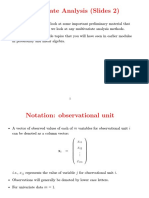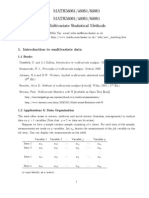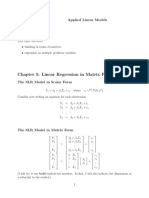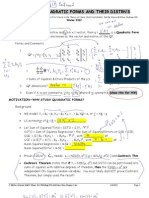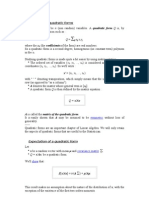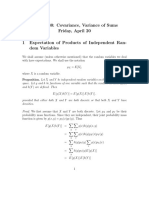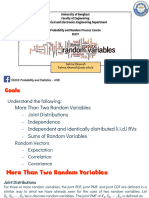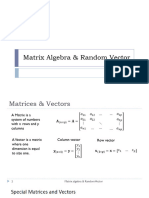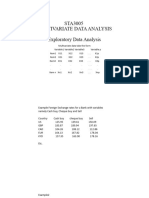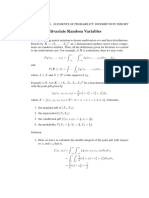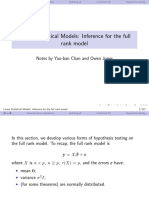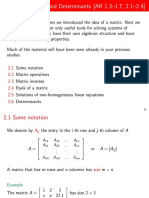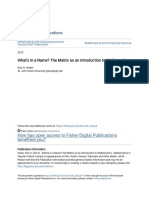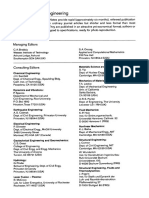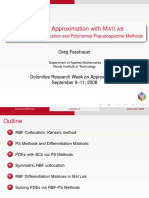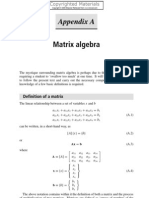0% found this document useful (0 votes)
203 views53 pages2 Random Vectors
The document discusses concepts related to random vectors and linear statistical models. It begins by introducing the idea of thinking of matrices and vectors as random variables rather than just numbers. It then defines the expectation and variance of random vectors. It also discusses properties of expectation and variance as they relate to random vectors. Finally, it introduces the concept of random quadratic forms and states a theorem about the expectation of quadratic forms of random vectors.
Uploaded by
slowjamsCopyright
© © All Rights Reserved
We take content rights seriously. If you suspect this is your content, claim it here.
Available Formats
Download as PDF, TXT or read online on Scribd
0% found this document useful (0 votes)
203 views53 pages2 Random Vectors
The document discusses concepts related to random vectors and linear statistical models. It begins by introducing the idea of thinking of matrices and vectors as random variables rather than just numbers. It then defines the expectation and variance of random vectors. It also discusses properties of expectation and variance as they relate to random vectors. Finally, it introduces the concept of random quadratic forms and states a theorem about the expectation of quadratic forms of random vectors.
Uploaded by
slowjamsCopyright
© © All Rights Reserved
We take content rights seriously. If you suspect this is your content, claim it here.
Available Formats
Download as PDF, TXT or read online on Scribd
/ 53



